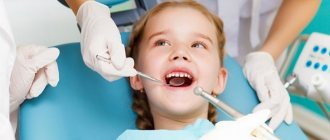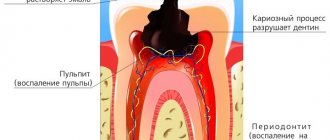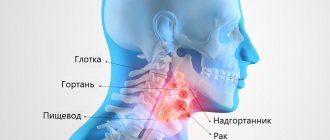Because the symptoms of diabetes can go undetected for significant periods of time, it is called the silent killer. Detection of the disease at an early stage and timely treatment helps prevent numerous severe complications that may be associated with damage to the nervous system, kidneys, eyes, disturbances in the peripheral blood supply, as well as complications during pregnancy.
We should not forget about the prevention of diabetes, which involves, in particular, lifestyle changes. You should stop smoking, do not forget about physical activity, and a balanced healthy diet is necessary. Below are ten key early signs of diabetes that should alert you.
No. 1 Copious, frequent urination
One of the earliest symptoms of diabetes is polyuria.
If you notice frequent urination and a significant increase in urine volume (especially at night), this is a serious signal to contact a general practitioner or endocrinologist.
The amount of glucose in the blood increases due to slower absorption. As a result, the work of the kidneys increases and they “try” to remove excess glucose into the urine. Water, instead of being absorbed by the body, is intensively removed from it.
Is it possible to deal with the problem on your own?
Night thirst is not always an alarming symptom. Of course, when a child constantly asks to drink, he needs to be shown to a doctor. The same applies to older people. If this symptom periodically bothers an adult and healthy person, you can try to take independent measures. First of all, you need to pay attention to how much water you drink during the day.
The norm is considered to be 2-2.5 liters of fluid per day. But you need to take into account that in the hot season you need to drink more, since a large amount of water is lost through sweat. In this case, you do not need to count sweet (carbonated) drinks - only pure water counts. Towards the evening, you should also give up black tea or coffee - they have a mild diuretic effect, helping to remove fluid from the body.
In winter, with the onset of the heating season, the air in city apartments becomes very dry. Because of this, the mucous membrane of the oropharynx quickly dries out at night, causing the desire to drink. You can humidify the air in your apartment using special humidifiers, placing several vessels with water in the room, or simply covering the heating radiators with a damp cloth.
#3 Insatiable hunger
Due to disrupted metabolic processes in the body, a person may constantly experience a feeling of hunger, as the cells stop absorbing glucose, which is “fuel” for the cells.
The body has to look for alternative sources of energy. Moreover, even consuming a large amount of food is not able to satiate a person. He is unable to satisfy his hunger, because overeating further increases the blood sugar level.
In such a situation, a visit to the endocrinologist cannot be postponed.
What is the best way to quench your thirst at night?
It’s not easy to quench your thirst at night. Simple clean water is not suitable for these purposes. If thirst is caused by dry mucous membranes, you can try drinking sparkling mineral water. Water with the addition of lemon juice helps a lot - instant refreshment of the mucous membrane is guaranteed. If you are thirsty on a regular basis, you can cook compotes, drink juices and fruit drinks - the main condition is that the drinks are not sweet.
Lemon water is a great thirst quencher
Sugar-containing carbonated drinks, milk and coffee are not suitable for quickly quenching thirst. They provoke water retention in the body, forcing a person to drink additional fluid. It is worth remembering that carbonated mineral water is not suitable for everyone - if you have stomach or intestinal diseases, it is better to use still water.
Kvass will help you quickly quench your thirst, regardless of its cause - but only if it is natural, fresh and without sugar. Green tea occupies a special place among drinks. It perfectly quenches even the strongest thirst and has a slight diuretic effect, removing excess fluid from the body and cleansing it. It is especially useful if thirst is caused by intoxication - alcoholic or viral.
#9 Dry skin and itching
Elevated blood glucose levels provoke dysfunction of the sweat and sebaceous glands. Human skin becomes sensitive and dry. Due to the reduction of the skin's protective barrier, toxins, allergens and infections easily penetrate the skin. In most cases, itching is the result of dry skin or a fungal infection. In some cases, dark spots appear on the skin with diabetes (in the armpits, on the neck and in the groin area).
If you are regularly bothered by burning or itching in various parts of the body, as well as dry skin (despite moisturizing), you need to consult a specialist.
Causes of extreme thirst
Physiological
A strong desire to drink is more common in the summer, because as the air temperature rises, a large amount of liquid evaporates from the surface of the skin and is lost due to rapid breathing. A typical combination of intense thirst, dry mouth and a feeling of the tongue sticking to the roof of the mouth. The discomfort disappears after drinking 1-2 glasses of water. Other causes can also provoke painful polydipsia: heavy physical activity, abuse of salty or spicy foods. If thirst is accompanied by dizziness, weakness, or faintness, you should visit a doctor.
Fever
The symptom is characteristic of the second period of fever, which is manifested by a steady increase in body temperature. A person constantly wants water, while his lips become dry and cracked, and the mucous membranes of the oral cavity are dry. The patient drinks a lot and may experience periodic sweating. The skin is red and hot to the touch. With a high fever of up to 40° C and severe dehydration, the patient may refuse to drink, which is an unfavorable sign. Persistent hyperthermia requires immediate medical attention.
Blood loss
Large blood loss provokes dehydration of the body, which is accompanied by severe thirst and dry mouth. Polydipsia is observed with external bleeding due to damage to large vessels. The cause can also be internal bleeding from open and closed injuries. Patients are in serious condition, feel severe weakness, darkening of the eyes, and ringing in the ears. The desire to drink immediately arises, due to the drying out of the mucous membranes of the mouth, speech becomes quiet, cracks and crusts form on the lips. Sometimes a person drinks several glasses, but the feeling of thirst does not decrease.
Intoxication
Any pathological conditions leading to the accumulation of toxic metabolites in the bloodstream cause constant thirst, which is associated with the effect of these substances on the autonomic centers of the medulla oblongata. The most typical symptom for alcohol intoxication is that in the morning after drinking a large amount of alcohol, you feel a strong desire to drink; you can often quench your thirst with only 2-3 glasses of water. There is a severe headache, which is aggravated by sharp sound or light stimuli.
A similar clinical picture develops as a result of endogenous intoxication due to massive purulent processes. Possible causes of polydipsia are extensive lobar pneumonia, large abscesses and widespread inflammation of soft tissues. Severe thirst worries throughout the entire period of the illness, combined with general weakness and profuse sweating, pale skin. The patient complains of dry mouth, which makes it difficult for him to chew and swallow food and talk.
Extreme thirst
Diabetes mellitus and its complications
Excruciating thirst is caused by the reaction of brain receptors to an increase in blood osmolarity. According to patients, they are constantly thirsty; the amount of water consumed per day reaches 5-6 liters. In addition to polydipsia, increased appetite and excessive frequent urination develop, which constitutes the classic triad of diabetes mellitus. In some patients, the feeling of extreme thirst may gradually increase, and the volume of liquid drunk reaches 10 liters. The combination of such manifestations with a sharp deterioration in general condition is typical for hyperosmolar coma.
Damage to other endocrine organs
Severe polydipsia, in which the patient is able to drink up to a liter of water at a time, occurs with diabetes insipidus - damage to the hypothalamus with insufficient secretion of vasopressin (antidiuretic hormone). The symptom is accompanied by diabetes: patients visit the toilet several times an hour, with each urination a large amount of light, odorless urine is released. A pathologically increased desire to drink is characteristic of hyperparathyroidism, and is caused by excessive accumulation of calcium ions in the plasma. Symptoms can also be caused by hyperthyroidism.
Kidney diseases
The kidneys regulate the amount of urine, ensure the elimination of toxic metabolic products and help maintain normal water balance. In illness, these functions are disrupted, which provokes the development of very strong thirst. In this case, the level of urine does not correspond to the volume of fluid consumed, since swelling often appears. A combination of polydipsia with dry skin and oral mucosa is typical, and sometimes intense skin itching is a concern. Thirst can be caused by the following reasons:
- Anomalies of the kidney structure
: wandering or “horseshoe-shaped” kidney, congenital polycystic disease. - Inflammatory processes
: acute and chronic glomerulonephritis, pyelonephritis, interstitial nephritis. - Systemic diseases with kidney damage
: hypertensive nephropathy, hemolytic-uremic syndrome, lupus nephritis. - Acute and chronic renal failure
. - Complex syndromes
: renal osteodystrophy, hepatorenal syndrome.
Pathological fluid loss
Excessive excretion of water from the body can be caused by various reasons: repeated vomiting and diarrhea due to intestinal infections, extensive burns, severe shortness of breath due to pulmonary diseases. All these conditions lead to dehydration, during which excruciating thirst is felt - depending on the degree of water imbalance, a person can drink from 2-3 to 7 liters of water per day. Polydipsia is combined with dry mouth, decreased skin turgor, with severe dehydration there is retraction of the eyeballs, and the skin looks like tissue paper.
Traumatic brain injuries
An acute desire to drink in people who have suffered head injuries is usually associated either with transient changes in the functioning of the thirst center in the brain, or with damage to the hypothalamus and the development of central diabetes insipidus. More often, polydipsia occurs immediately after a head injury or during the first day, the amount of water drunk increases to 3-4 liters. Delayed onset of symptoms is an unfavorable prognostic sign. Severe thirst is accompanied by other symptoms: temporary disturbances of consciousness, dizziness and instability in an upright position, painful nausea and vomiting.
Rare causes
- Hereditary metabolic disorders
: Fanconi syndrome, renal diabetes insipidus, phosphate diabetes. - Liver diseases
: chronic viral hepatitis, infiltrative lesions (amyloidosis, glycogenosis, fatty degeneration), cirrhosis. - Mental disorders
: hysterical neurosis, schizophrenia, obsessive-compulsive disorder. - Generalized hyperhidrosis
.
No. 10 Visual impairment
Is it difficult for you to see details, everything floats before your eyes and you feel like you’re in a fog, have you lost your visual acuity? These symptoms may also signal high blood sugar levels.
If such symptoms are left unattended, over time new blood vessels will appear on the retina and serious problems such as cataracts, glaucoma and retinopathy will arise.
Proper treatment and proper nutrition for diabetes of any type has a positive prognosis; the person remains able to work and does not change his usual lifestyle.
Take care of your health; if you have even one of the listed symptoms, consult a doctor!
Diagnostics
To find out the cause of constant thirst and dry mouth, you need to consult a therapist or general practitioner. The specialist carries out an initial examination of the patient, and then, if a specific pathology is detected, he can refer him to doctors of a different profile. The diagnostic search involves conducting advanced laboratory tests and standard imaging studies. The most informative for diagnosis are:
- Blood test for glucose
. Sugar levels are measured at the first visit to the doctor, regardless of food intake; if high levels are obtained, a glucose tolerance test is prescribed and the fasting sugar level is determined. Be sure to do a test for the presence of glucose in the urine, which is typical for diabetes. - Hormone analysis
. The study includes assessment of the level of thyroxine and triiodothyronine, corticosteroids, and parathyroid hormone. In case of high glycemia, the amount of insulin in the blood is determined; for differential diagnosis between type 1 and type 2 diabetes, a C-peptide test is performed. Plasma concentrations of calcium, phosphorus and sodium are also examined. - Ultrasound examination
. To clarify the cause of persistent polydipsia, an ultrasound scan of the thyroid gland and parathyroid glands, adrenal glands, and liver is required. If a heterogeneous echogenic structure of the liver parenchyma is detected, non-invasive elastography of the liver is recommended to assess the degree of fibrosis. - X-ray examination
. When constant thirst is combined with shortness of breath and other respiratory symptoms, a chest x-ray is indicated in frontal and lateral projections. The images reveal signs of emphysema, sclerosis and bronchial deformation. An examination of the ENT organs is required, and a culture of sputum or a throat smear is performed. - Neurological examination
. To exclude the cerebral origin of persistent polydipsia, an examination by a neurologist is necessary to check the symmetry of reflexes and assess the functioning of the autonomic nervous system. If there are suspicious signs, an x-ray of the sella turcica is performed. According to indications, a CT scan of the brain is prescribed.
Constant thirst may be a sign of diabetes







